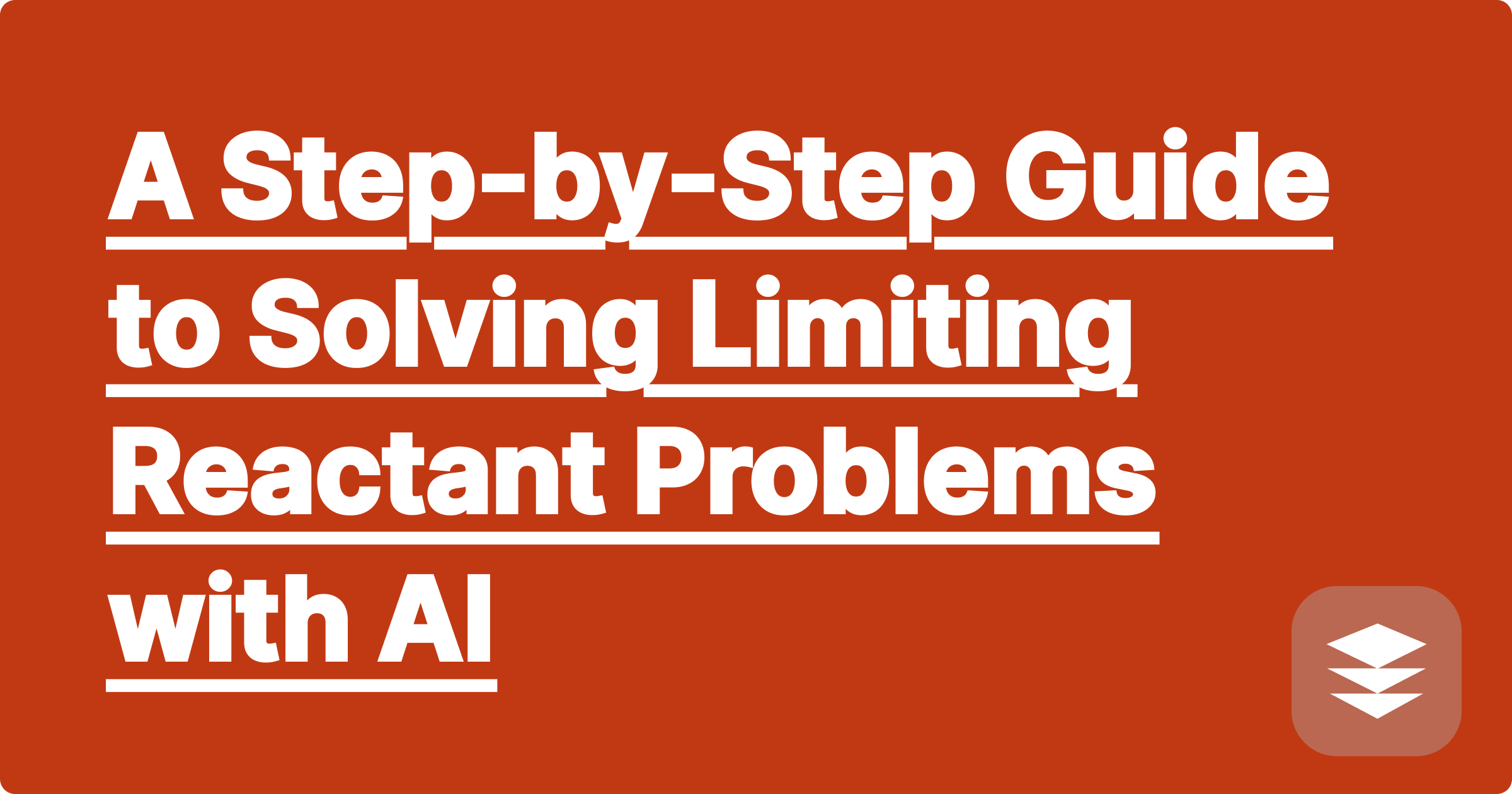
You've mastered basic stoichiometry. You can convert from grams to moles and back again with ease. Then, your general chemistry professor introduces a new twist: limiting reactant (or limiting reagent) problems. Suddenly, you're not just given one starting amount; you're given two, and you have to figure out which one runs out first.
This extra layer of logic is where many students get stuck. Do you compare the moles? Do you compare the grams? How do you know which reactant dictates the amount of product you can make? The process is logical, but it has several steps, and a mistake at any point can lead you to the wrong conclusion.
A powerful stoichiometry solver can act as your guide. By using a limiting reactant calculator step by step AI like GPAI Solver, you can see the entire logical workflow laid out clearly, ensuring you never make a mistake.
The core challenge is that it's not a single calculation; it's a comparison. You essentially have to solve the stoichiometry problem twice and then compare the results. The common pitfalls include:
Let's walk through how GPAI Solver would tackle a classic limiting reactant problem, demonstrating the most reliable method.
The Problem: "If you start with 20.0 g of lithium hydroxide (LiOH) and 20.0 g of carbon dioxide (CO₂), what is the mass of lithium carbonate (Li₂CO₃) that can be produced? The balanced equation is: 2LiOH + CO₂ → Li₂CO₃ + H₂O"
How GPAI Solver Finds the Limiting Reactant:
The best way to learn is to try the problem yourself first. Use the "two-path" method shown above. Then, upload the problem to GPAI. Don't just check your final answer. Check your intermediate steps.
This workflow makes the AI your personal TA, helping you catch logical errors, not just calculation mistakes.
Understanding limiting reactants is crucial for real-world chemistry, from manufacturing to research. It's all about efficiency and resource management. By using an AI assistant to master the calculations, you can build a strong and intuitive understanding of this foundational chemical principle.
[Stop getting stuck on limiting reactant problems. Try GPAI Solver today for a clear, step-by-step solution. Sign up now for 100 free credits and master stoichiometry.]
How to Use an AI Solver to Check for Unit Conversion Errors in Physics
Solving Systems of Linear Equations with an AI Matrix Calculator
A Step-by-Step Guide to Solving Limiting Reactant Problems with AI
Can AI Solve Word Problems? Translating Text into Equations
Verifying Your Work: Using an AI Solver as the Ultimate Answer Key
How the 'Humanizer' Can Rephrase Your Solution for Better Clarity
From a Photo of a Formula to a Full Solution: The Solver Workflow
How to Solve Recursive Problems with an AI Assistant
A Guide to Solving Equilibrium Problems in Statics and Chemistry
AI vs. Graphing Calculator: Why a Solver Offers More Insight